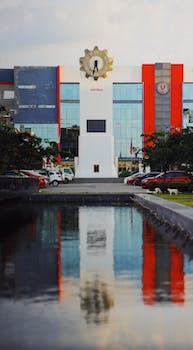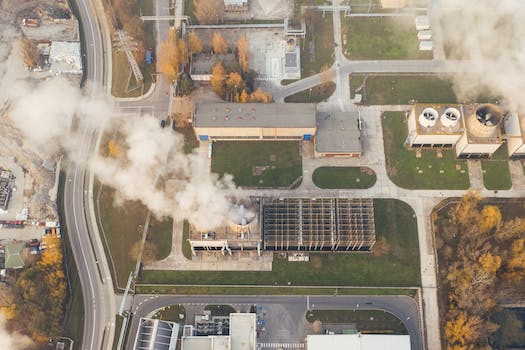

-
Table of Contents
Empowering Minds, Transforming Lives: Tackling the Education Crisis in the Philippines
Introduction
The Overlooked Crisis: Education in the Philippines
Education is a fundamental right and a key driver of social and economic development. However, in the Philippines, there is an ongoing crisis that often goes unnoticed - the state of education. Despite efforts to improve the education system, the Philippines continues to face numerous challenges that hinder the quality and accessibility of education for its citizens. This article aims to shed light on the overlooked crisis of education in the Philippines, highlighting the key issues and their implications for the country's future.
The Impact of Limited Resources on Education in the Philippines
The Philippines is a country known for its beautiful beaches, vibrant culture, and warm hospitality. However, beneath the surface lies an overlooked crisis: education. Limited resources have had a significant impact on the quality of education in the Philippines, leaving many children without access to a proper education.
One of the main challenges faced by the education system in the Philippines is the lack of adequate infrastructure. Many schools in rural areas lack basic facilities such as classrooms, libraries, and even toilets. This not only hampers the learning experience but also discourages students from attending school regularly. Without a conducive learning environment, it becomes difficult for students to focus and excel academically.
Furthermore, the shortage of qualified teachers exacerbates the problem. In remote areas, it is common to find a single teacher responsible for multiple grade levels. This means that students receive limited attention and personalized instruction, hindering their ability to grasp complex concepts. Additionally, the lack of qualified teachers leads to a high turnover rate, as many educators seek better opportunities abroad or in urban areas. This constant turnover disrupts the continuity of education and further widens the gap between urban and rural schools.
Limited resources also affect the availability of educational materials and technology. Many schools in the Philippines lack textbooks, computers, and internet access. This puts students at a disadvantage, as they are unable to access the wealth of information available online or utilize digital tools for learning. Without access to up-to-date resources, students struggle to keep up with the rapidly changing world and are ill-prepared for higher education or the job market.
Moreover, the impact of limited resources is felt most acutely by marginalized groups, such as indigenous communities and children living in poverty. These groups often face additional barriers to education, such as language barriers, discrimination, and lack of financial support. As a result, they are more likely to drop out of school at an early age, perpetuating the cycle of poverty and limiting their future opportunities.
The consequences of limited resources on education in the Philippines are far-reaching. The country's low literacy rate and high dropout rate are indicative of the systemic challenges faced by the education system. Without a well-educated population, the Philippines struggles to compete globally and provide its citizens with the skills necessary for economic growth and development.
Addressing the crisis requires a multi-faceted approach. The government must prioritize education and allocate more resources to improve infrastructure, recruit and retain qualified teachers, and provide access to educational materials and technology. Additionally, partnerships between the government, non-profit organizations, and the private sector can play a crucial role in bridging the resource gap and ensuring that all children have equal access to quality education.
In conclusion, the impact of limited resources on education in the Philippines is a pressing issue that cannot be ignored. The lack of adequate infrastructure, qualified teachers, and educational materials hinders the learning experience and perpetuates inequality. It is imperative that the government and other stakeholders take immediate action to address this crisis and provide all children in the Philippines with the education they deserve. Only then can the country unlock its full potential and pave the way for a brighter future.
Addressing the Challenges of Access to Education in Rural Areas

The Philippines is a country known for its beautiful beaches, vibrant culture, and warm hospitality. However, beneath this picturesque facade lies a pressing issue that often goes unnoticed: the state of education in the country. While education is considered a basic right for every Filipino child, the reality is that many children, especially those in rural areas, face significant challenges in accessing quality education.
One of the main challenges in addressing the issue of education in rural areas is the lack of infrastructure. Many remote communities lack proper school buildings, classrooms, and even basic facilities such as electricity and clean water. This makes it difficult for children to attend school regularly and hampers their ability to learn effectively. Without a conducive learning environment, it is no wonder that many students in rural areas struggle academically.
Another challenge is the shortage of qualified teachers. In many rural areas, there is a scarcity of teachers who are willing to work in remote locations. This leads to overcrowded classrooms and a high student-to-teacher ratio, making it difficult for teachers to provide individual attention to each student. Moreover, the lack of qualified teachers means that students may not receive the necessary guidance and support they need to excel academically.
Furthermore, poverty is a significant barrier to education in rural areas. Many families in these communities struggle to make ends meet, and education often takes a backseat to more immediate needs such as food and shelter. As a result, children are forced to drop out of school to help their families earn a living. This perpetuates the cycle of poverty and deprives these children of the opportunity to break free from the constraints of their circumstances through education.
To address these challenges, the Philippine government has implemented various initiatives. One such initiative is the construction of more school buildings in remote areas. Through partnerships with local communities and non-governmental organizations, the government aims to provide better infrastructure and facilities to ensure that children have a conducive learning environment.
Additionally, the government has implemented programs to attract and retain qualified teachers in rural areas. These programs offer incentives such as higher salaries, housing assistance, and professional development opportunities to encourage teachers to work in remote locations. By addressing the shortage of qualified teachers, the government hopes to improve the quality of education in rural areas.
Moreover, the government has also implemented programs to alleviate poverty and improve access to education. These programs provide financial assistance to families in need, ensuring that children can stay in school instead of being forced to work. By addressing the root causes of poverty, the government aims to break the cycle and create a brighter future for the next generation.
In conclusion, the challenges of access to education in rural areas in the Philippines are significant but not insurmountable. By addressing the lack of infrastructure, shortage of qualified teachers, and the issue of poverty, the government is taking steps towards improving the state of education in these communities. However, it is crucial for all stakeholders, including the government, non-governmental organizations, and the private sector, to work together to ensure that every Filipino child has equal access to quality education. Only then can we truly address the overlooked crisis of education in the Philippines and pave the way for a brighter future for all.
Examining the Role of Government Policies in Education Inequality
The education system in the Philippines has long been plagued by inequality, with many students lacking access to quality education. This issue is often overlooked, overshadowed by other pressing concerns such as poverty and healthcare. However, it is crucial to examine the role of government policies in perpetuating this education inequality.
One of the main factors contributing to education inequality in the Philippines is the lack of funding for public schools. The government allocates a significant portion of its budget to other sectors, such as defense and infrastructure, leaving little for education. As a result, public schools are often underfunded, lacking basic resources such as textbooks, classrooms, and qualified teachers.
Furthermore, the distribution of educational resources is highly uneven across different regions in the country. Rural areas, in particular, suffer from a lack of educational facilities and qualified teachers. This disparity is exacerbated by the fact that many teachers prefer to work in urban areas where they can earn higher salaries and have access to better opportunities.
Another government policy that contributes to education inequality is the lack of support for students from low-income families. Many students in the Philippines come from impoverished backgrounds, making it difficult for them to afford the costs associated with education. While there are scholarship programs available, they are often limited in scope and fail to reach all deserving students.
Moreover, the quality of education in the Philippines is also affected by the lack of standardized curriculum and assessment methods. Each region and even each school may have its own curriculum, leading to inconsistencies in the quality of education provided. Additionally, the assessment methods used in schools vary widely, making it difficult to gauge the performance of students accurately.
To address these issues, the government needs to prioritize education and allocate more funding to public schools. This would enable schools to provide better resources and attract qualified teachers. Additionally, the government should focus on improving the distribution of educational resources, ensuring that all regions have equal access to quality education.
Furthermore, the government should implement more comprehensive scholarship programs to support students from low-income families. These programs should be accessible to all deserving students and cover not only tuition fees but also other expenses such as books and transportation.
In terms of curriculum and assessment, the government should work towards standardization. A standardized curriculum would ensure that all students receive the same quality of education regardless of their location. Similarly, standardized assessment methods would provide a more accurate measure of students' performance and enable better monitoring of educational outcomes.
In conclusion, government policies play a significant role in perpetuating education inequality in the Philippines. The lack of funding for public schools, uneven distribution of resources, limited support for low-income students, and the absence of standardized curriculum and assessment methods all contribute to this crisis. To address these issues, the government must prioritize education, allocate more funding, improve resource distribution, expand scholarship programs, and work towards standardization. Only through these measures can the Philippines hope to provide equal access to quality education for all its citizens.
Q&A
1. What is the current state of education in the Philippines?
The current state of education in the Philippines is facing numerous challenges, including inadequate funding, lack of resources, overcrowded classrooms, and low teacher salaries.
2. What are the main issues affecting education in the Philippines?
The main issues affecting education in the Philippines include high dropout rates, low literacy levels, limited access to quality education in rural areas, and a mismatch between the skills taught in schools and the demands of the job market.
3. What are the potential consequences of the education crisis in the Philippines?
The potential consequences of the education crisis in the Philippines include limited economic growth, increased poverty rates, higher unemployment rates, and a perpetuation of social inequality.
Conclusion
In conclusion, the education system in the Philippines is facing an overlooked crisis. Despite efforts to improve access and quality, there are still significant challenges that need to be addressed. Issues such as inadequate funding, outdated curriculum, and lack of teacher training continue to hinder the progress of education in the country. Urgent action is needed to prioritize education and provide equal opportunities for all Filipino students. Without proper attention and investment, the education crisis in the Philippines will persist, hindering the country's development and the future prospects of its youth.











